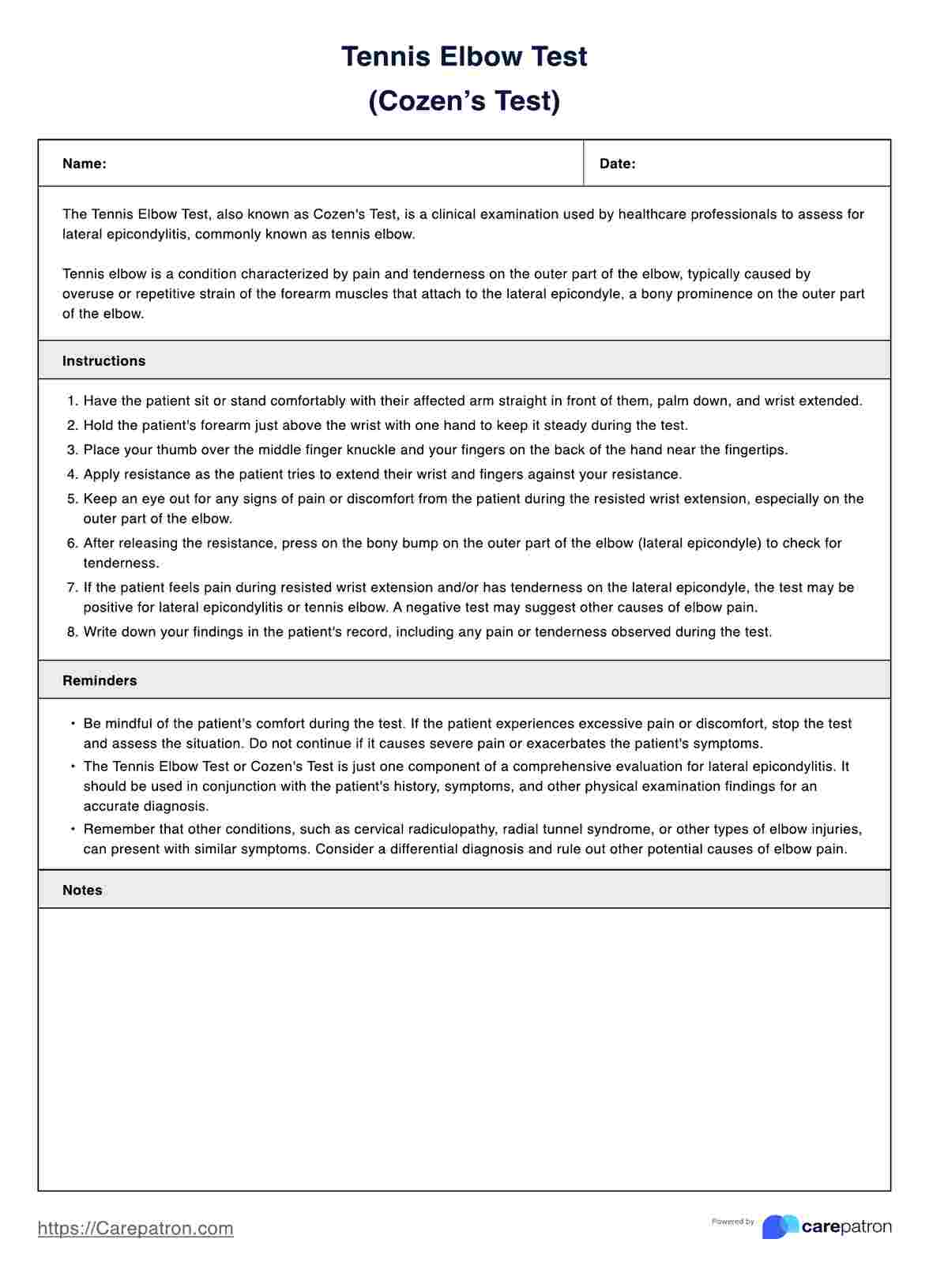Other conditions that can be mistaken for tennis elbow include radial tunnel syndrome, posterior interosseous nerve entrapment, cervical radiculopathy, and arthritis of the elbow. These conditions can cause similar symptoms of pain and tenderness on the outside of the elbow, making an accurate diagnosis important for proper treatment.

Tennis Elbow Test
Check your patient's elbow condition using a Tennis Elbow Test. Access our free step-by-step guide and example.
Tennis Elbow Test Template
Commonly asked questions
The first signs of tennis elbow are usually pain and tenderness on the outside of the elbow, which may radiate into the forearm. The pain is often worse when lifting or bending the arm, gripping objects, or moving the wrist. Other early symptoms include difficulty fully straightening the arm and swelling in the elbow.
The Cozen method, also known as Cozen's test or the resisted wrist extension test, is a physical examination technique used to diagnose tennis elbow. The test involves the patient extending their wrist against resistance while the examiner palpates the lateral epicondyle. If pain is elicited at the lateral epicondyle, the test is considered positive for tennis elbow. However, the test has limitations in terms of sensitivity and specificity and should be used in conjunction with other diagnostic methods.
EHR and practice management software
Get started for free
*No credit card required
Free
$0/usd
Unlimited clients
Telehealth
1GB of storage
Client portal text
Automated billing and online payments











